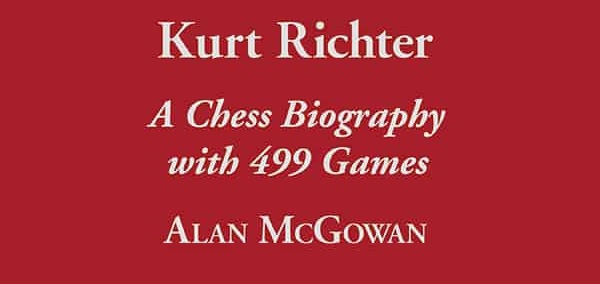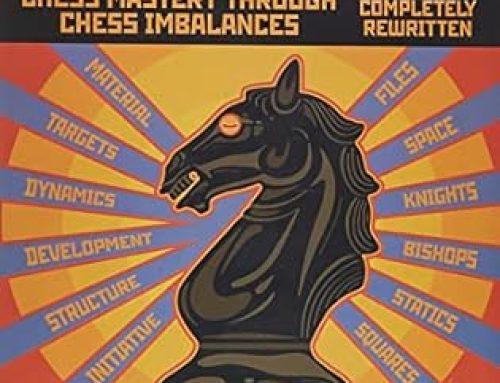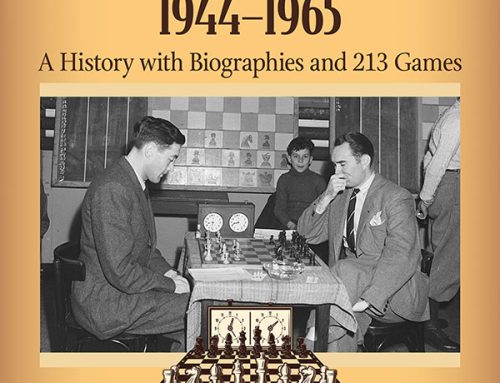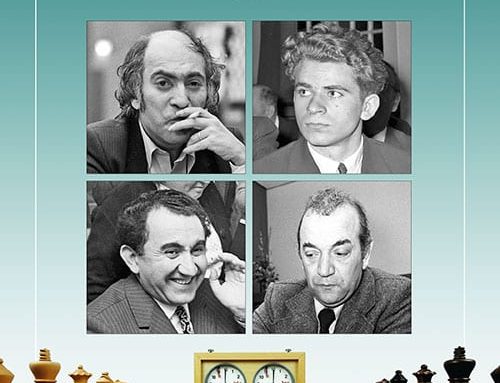Alan McGowan’s Kurt Richter: A Chess Biography with 499 Games examines the life and times of the often-forgotten about European master. The book highlights not only Richter’s career but also the German chess culture and the effect that the two world wars had on his play.
McGowan divides Richter’s life into 9 parts. All 9 are basically the same in style and substance, which has a few pictures, sometimes not of Richter, but those who knew or worked with him. Most of each chapter is a group of, usually, well-annotated games that are annotated from contemporary sources and a diagram or two. Most of the games are from tournaments and a cross table is provided for those tournaments.
Regarding content, the book’s 9 parts can best be divided into three sections. Parts 1 and 2 – cover Richter’s time as an up-and-coming chess player. Parts 3 to 5 cover the majority of Richter’s playing career, which occurred during the 1930s. The last section, parts 6 to 9, deals with Richter during the war and his last two decades.
McGowan passes through Richter’s childhood and the effects of World War I on Richter in less than a page. How much these years affected Richter is entirely unclear and though they probably did affect him in some ways not explored in the text, it is not surprising, given the two wars and over a century of time, to find material on Richter’s youth. Richter’s experience at the Berlin Championships is also highlighted for the first time in 1921. He would play in 21 of these over the next 33 years. The second part highlights Richter becoming a master, his starting work as an editor for various chess books, and his first international masters’ tournament where he won 5, lost 5, and tied 1, with his most notable win
being against Grunfeld, and his losses included a loss to Bogoljubow and Samisch, who came in first and second respectively.
More than half of the book’s text is in this next section of three parts which covers the 1930s. The 1930s started off great, with Richter winning the Wilmersdorf Jubilee in January of 1930. The following year, he represented Germany in the 1931 Prague Olympiad. Shortly after the cover of the Prague tournament is one of the infrequent sections, highlighting some aspect of Richter’s personality. These are often drawn from correspondence, such as in this brief section on draws, when Richter wrote “To sum up: nothing against really hard-fought draws and nothing against scientifically serious draws, but everything against short, insipid, so-called “games“ which have DRAW! Written all over them from start to finish. “ (p. 76) In 1936, Richter led the German team at the unofficial Olympiad in Munich (Boooljubow participated in the Nottingham tournament that conflicted with this event), and had a fine score of +8-2=8, losing to Keres and drawing Pirc, Stahlberg, Maroczy, and Eliskases, along with several others.
The third and final section focuses on the last half of Rickter’s life, where geopolitical forces, such as the Second World War and the Cold War greatly affect Richter’s tournament options. Richter’s service in the war and even his time in a Russian prisoner of war camp is very lightly treated, though again, one cannot help but wonder about a lack of resources given the records kept during and just after the war. Strangely, McGowan does not highlight FIDE naming Richter an International Master (IM) in 1950 but does mention later, how Richter never played in a major event after earning this title. Of course, Richter had grave concerns, which he voiced in correspondence, about it being too easy for players to earn titles. Though he was not an avid player during his last two decades, he continued to play in the Berlin Championship, doing so for the last time in 1964, as well as writing and editing.
As is typical, the Appendices provide a great deal of information. The appendices start with over 130 very lightly annotated games, many of which are not in chessgames.com (as of November 23, 2018). These games are followed by almost 40 pages worth of analysis on the openings played by Richter. The opening analysis is rather an original appendix. The other appendix, a list of tournament and match results, is much more common, but nonetheless, nicely done.
All and all, this is a well-researched monograph that does a nice job of introducing the reader to all aspects of his life, especially those before the Second World War.
This book can be purchased online at www.mcfarlandbooks.com or by calling 800–253–2187.





